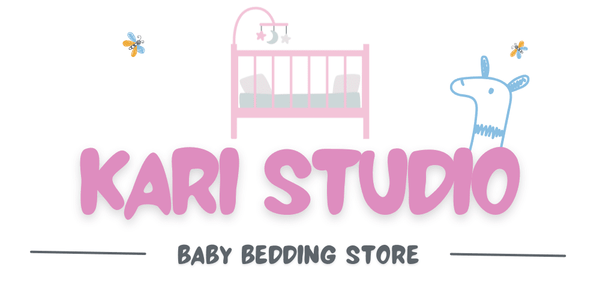Crib bumpers have been a nursery staple for decades, promising soft protection for sleeping babies and a polished look for the crib. But despite their popularity, safety experts now warn that these plush barriers can actually pose deadly risks. In fact, crib bumpers have been linked to approximately 113 infant deaths between 1985 and 2012. Modern nurseries are dropping bumpers entirely, prioritizing minimalist setups that keep babies truly safe.
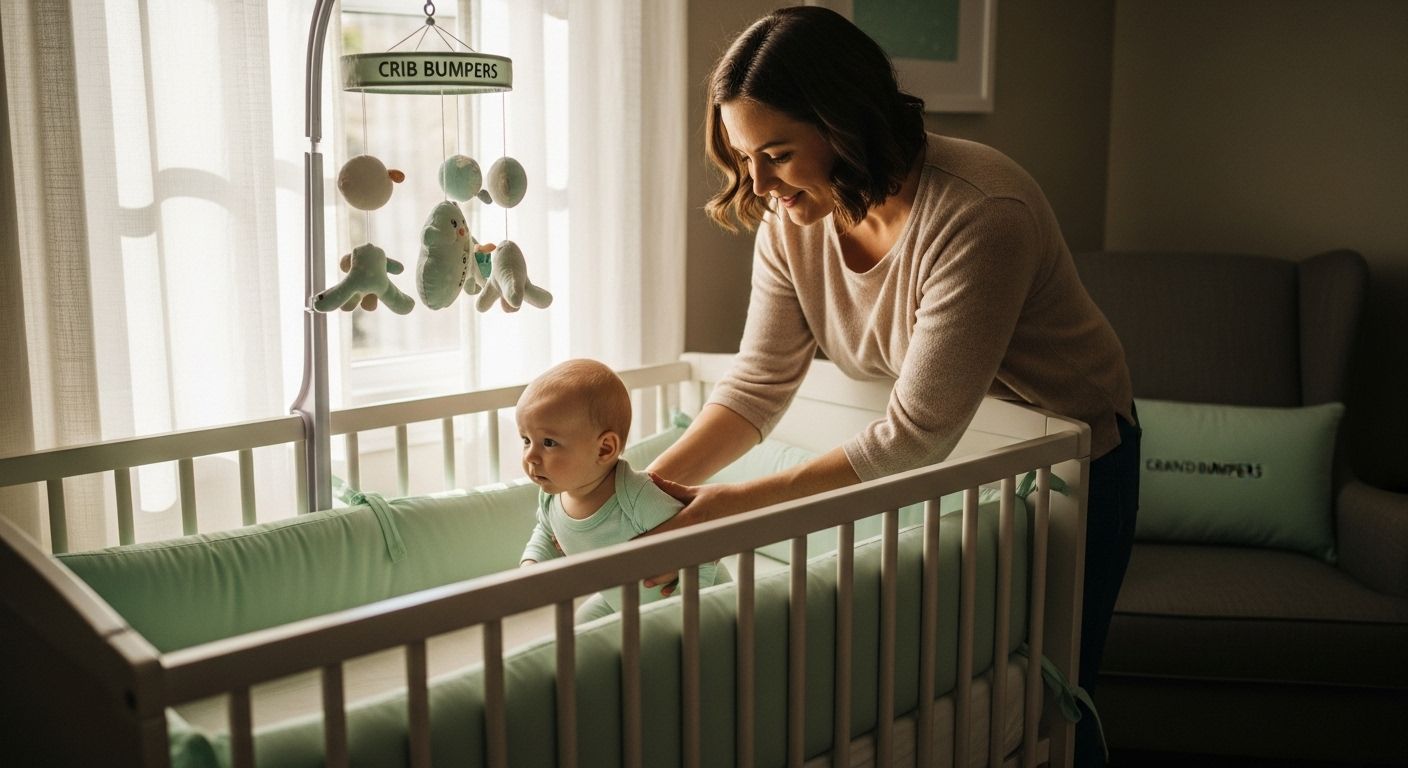
Table of Contents
- Defining Crib Bumpers: What Are They And Their Uses?
- The Purpose Of Crib Bumpers: Why Do Parents Choose Them?
- Safety Concerns: Understanding Risks Associated With Crib Bumpers
- Alternatives To Crib Bumpers: What Options Are Available?
- Current Trends And Recommendations In Nursery Design
Quick Summary
| Takeaway | Explanation |
|---|---|
| Crib bumpers are considered unsafe. | Pediatric experts now advise against using crib bumpers due to risks of suffocation and overheating. |
| Create a bare crib environment for safety. | A minimalist sleep space reduces hazards, using only firm mattresses and fitted sheets. |
| Understand your protective instincts. | Many parents choose bumpers believing they enhance safety, but research shows they often increase risk. |
| Explore safer alternatives to bumpers. | Consider mesh liners, sleep sacks, and rail covers that provide safety without suffocation risks. |
| Stay updated on nursery design trends. | Modern nurseries prioritize safety with innovative, functional designs and smart monitoring technologies. |
Defining Crib Bumpers: What Are They and Their Uses?
Crib bumpers are padded cushions designed to line the interior walls of an infant’s crib, historically intended to prevent babies from getting limbs stuck between crib slats or bumping their heads. These rectangular or contoured padding accessories attach to the inner edges of cribs, creating a soft barrier around the sleeping area.
The Traditional Purpose of Crib Bumpers
Originally, crib bumpers served several perceived protective functions for infants. Parents and caregivers believed these padded accessories would:
- Prevent babies from bumping their heads against hard wooden crib sides
- Stop tiny limbs from getting caught between crib slats
- Create a softer, more comfortable sleeping environment
- Add decorative aesthetic to nursery decor
However, modern crib designs with narrower slat spacing and enhanced safety standards have significantly reduced the original rationale for using these accessories.
Safety Considerations and Recommendations
According to the U.S. Consumer Product Safety Commission, crib bumpers are now considered potentially hazardous. Pediatric safety experts strongly recommend against using traditional padded bumpers due to significant risks including:
- Increased suffocation hazards
- Potential for babies to overheat
- Risk of babies using bumpers to climb out of cribs
- Reduced air circulation in the sleeping area
Modern pediatric guidelines emphasize creating a bare, firm sleep surface for infants to minimize potential safety risks. Instead of traditional bumpers, parents are advised to use properly fitted sheets and maintain a clear crib environment that prioritizes infant safety.
The Purpose of Crib Bumpers: Why Do Parents Choose Them?
Parents have traditionally selected crib bumpers out of genuine concern for their infant’s safety and comfort, motivated by well-intentioned protective instincts. While these motivations seem logical, modern pediatric research reveals significant discrepancies between perceived benefits and actual safety outcomes.
Perceived Safety Motivations
The primary reasons parents historically selected crib bumpers stem from several protective assumptions. Most parents believed these accessories would:
- Shield infants from potential physical injuries
- Prevent accidental limb entrapment between crib slats
- Create a softer sleeping environment
- Add aesthetic appeal to nursery decor
Understanding these motivations requires examining the emotional and practical considerations driving parental decision making around infant sleep environments.
To clarify the reasons parents choose crib bumpers versus the risks as understood by modern experts, here is a side-by-side comparison:
| Parental Motivation | Description | Modern Safety Perspective | Explanation |
|---|---|---|---|
| Prevent injury | Belief that bumpers shield infants from bumps and injuries | Risk of suffocation or entrapment | Soft barriers pose greater suffocation risk than potential for bumps |
| Avoid limb entrapment | Fear that arms or legs will get caught between crib slats | Modern cribs have narrow slats | New designs largely prevent limb entrapment without needing bumpers |
| Increase comfort | Desire for a softer, more cozy sleep space | Bare, firm surfaces recommended | Soft padding increases risk factors, not comfort, per pediatric guidelines |
| Enhance nursery decor | Add color or style to the crib and room | Prioritize safety over decoration | Minimalist approaches encourage skipping unnecessary accessories |
Emotional and Practical Considerations
Parental choices about crib bumpers frequently originate from an instinctive desire to create the most secure sleeping space possible. Many caregivers imagine soft padding will provide additional protection against potential accidents, not realizing that modern crib designs have already addressed many original safety concerns.
According to National Institutes of Health research, parents often select crib bumpers without fully understanding the associated risks. The emotional drive to protect can sometimes overshadow scientific recommendations about infant sleep safety.
Modern Safety Perspectives
Contemporary pediatric guidance strongly discourages crib bumper usage. Medical professionals emphasize that bare crib surfaces represent the safest sleep environment for infants. The risks associated with bumpers including suffocation, overheating, and potential climbing hazards far outweigh any perceived protective benefits.
Today’s parents are encouraged to prioritize scientifically validated safety practices: using firm mattresses, avoiding loose bedding, and maintaining clear sleeping spaces that minimize potential risks to infant health and well-being.
Safety Concerns: Understanding Risks Associated with Crib Bumpers
Crib bumpers pose significant safety risks for infants, transforming what parents perceive as protective accessories into potential hazards. Understanding these risks requires a comprehensive examination of the scientific evidence and professional medical recommendations surrounding infant sleep environments.
Primary Suffocation and Entrapment Risks
The most critical safety concern with crib bumpers is the potential for fatal suffocation and accidental entrapment. These padded accessories create dangerous scenarios where infants can:
- Become wedged between the bumper and crib mattress
- Press their face against the soft padding, restricting breathing
- Get trapped in gaps created by loosely fitted bumpers
- Experience reduced air circulation around their sleeping area
Infants lack the motor skills and strength to reposition themselves effectively when experiencing respiratory distress, making these risks particularly alarming for parents and caregivers.
Statistical Evidence of Danger
According to American Academy of Pediatrics research, crib bumpers have been directly linked to numerous infant fatalities. The statistical evidence reveals:
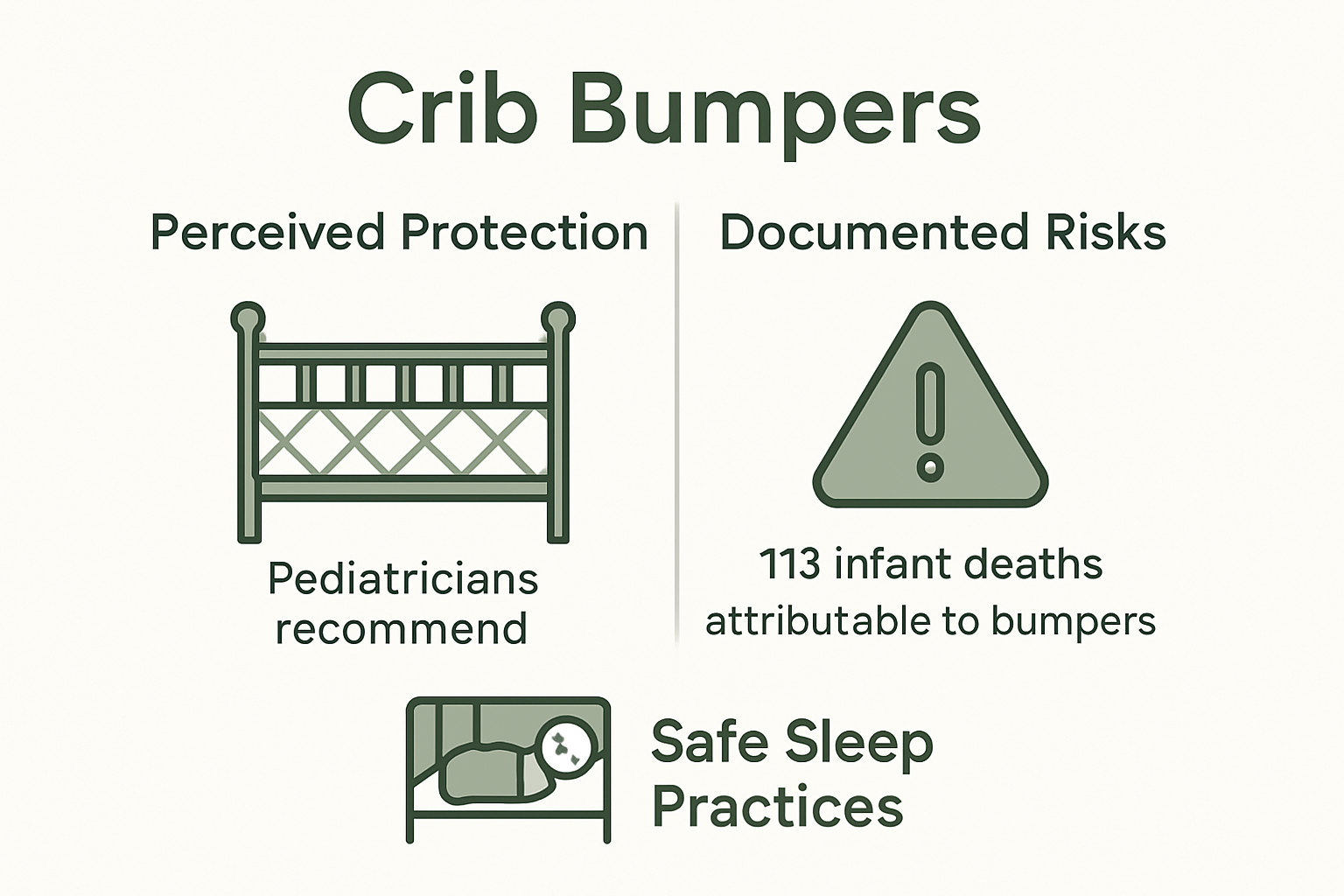
Here is a summary of the statistical evidence highlighting the dangers of crib bumpers:
| Statistic | Data / Finding |
|---|---|
| Infant deaths linked to crib bumpers | Approximately 113 infant deaths (1985-2012) |
| Primary cause of bumper-related deaths | Suffocation |
| Most vulnerable age group | Infants under 12 months |
| Professional recommendation | Bare cribs, no padded bumpers |
- Approximately 113 infant deaths between 1985 and 2012 were associated with padded crib bumpers
- Suffocation represents the primary cause of these tragic incidents
- Infants under 12 months are most vulnerable to these life-threatening risks
Recommended Safe Sleep Practices
Pediatric experts universally recommend creating a minimalist, bare crib environment to ensure infant safety. Key recommendations include:
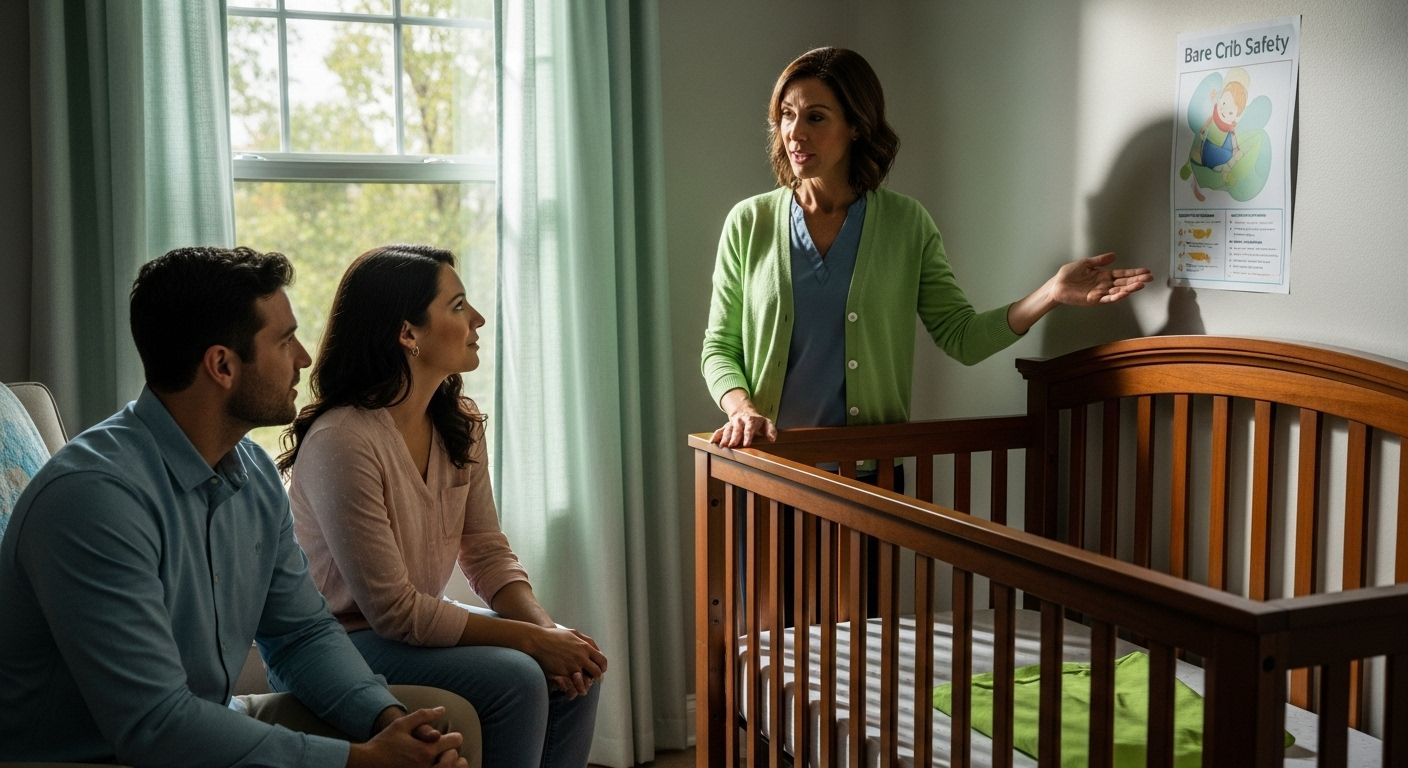
- Using firm mattresses with tightly fitted sheets
- Avoiding any additional soft bedding or padding
- Maintaining clear sleeping surfaces without potential obstructions
- Placing infants on their backs to reduce sudden infant death syndrome (SIDS) risks
By understanding and implementing these evidence-based guidelines, parents can significantly reduce potential dangers and create safer sleeping environments for their infants.
Alternatives to Crib Bumpers: What Options Are Available?
Parents seeking safe and comfortable infant sleeping environments have multiple alternatives to traditional crib bumpers. Understanding these options requires exploring strategies that prioritize infant safety while maintaining a nurturing sleep space.
Safe Sleeping Surface Strategies
Creating a secure sleeping environment involves more than simply removing bumpers. Parents can implement several protective and comfortable approaches that ensure infant safety:
- Use breathable mesh crib liners designed for airflow
- Select cribs with narrow slat spacing to prevent limb entrapment
- Invest in specialized sleep sacks that restrict excessive movement
- Choose fitted sheets with secure, tight elastic edges
These alternatives address the original concerns that led parents to use traditional crib bumpers while maintaining a safe sleep environment.
Protective Accessories and Innovations
Modern infant sleep technology offers innovative solutions that replace outdated bumper designs. Contemporary alternatives focus on minimizing risks while providing comfort:
-
Vertical crib rail covers that protect without creating suffocation risks
-
Lightweight breathable guard panels made from safe, translucent materials
-
Specialized infant sleep clothing that reduces movement and maintains temperature
-
Monitoring devices that track infant positioning and breathing patterns
According to the Consumer Product Safety Commission, bare is best when designing infant sleep environments. Their guidelines emphasize minimalist approaches that prioritize infant safety.
Practical Parental Recommendations
Pediatric experts recommend a holistic approach to infant sleep safety that goes beyond simple accessory replacements. Key strategies include:
- Maintaining consistent sleep positioning
- Using firm, flat mattresses
- Keeping cribs free of loose bedding and soft objects
- Practicing regular infant sleep position monitoring
By understanding and implementing these evidence-based recommendations, parents can create secure, comfortable sleeping spaces that protect their infants without relying on potentially dangerous accessories.
Current Trends and Recommendations in Nursery Design
Nursery design has undergone significant transformations, with contemporary approaches prioritizing infant safety, functionality, and minimalist aesthetics. These emerging trends reflect an evolving understanding of child development, safety standards, and parental needs in creating optimal sleeping environments.
Safety-Focused Design Principles
Modern nursery design emphasizes minimalist and risk-reduction strategies that fundamentally reimagine infant sleeping spaces. Key design principles include:
- Eliminating unnecessary soft surfaces and decorative accessories
- Selecting cribs with precise engineering for maximum safety
- Focusing on breathable materials and transparent design elements
- Integrating advanced monitoring technologies
Designers and pediatric experts collaborate to develop sleep environments that protect infants while supporting their developmental needs.
Technological Integration and Monitoring
Contemporary nursery design incorporates sophisticated technological solutions that enhance infant safety and parental peace of mind. These innovations include:
- Smart breathing and movement monitoring systems
- Temperature-regulating sleep surfaces
- Advanced video monitoring with machine learning capabilities
- Integrated white noise and sleep environment management technologies
According to the Consumer Product Safety Commission, technological advancements play a crucial role in creating safer infant sleeping environments by providing real-time insights and proactive safety mechanisms.
Holistic Approach to Nursery Planning
Contemporary nursery design transcends traditional decorative considerations, adopting a comprehensive approach that balances aesthetic appeal with scientific understanding of infant development:
- Emphasizing multifunctional furniture designs
- Selecting materials that support healthy sleep patterns
- Creating adaptable spaces that grow with the child
- Incorporating ergonomic considerations for caregivers
By integrating scientific research, technological innovation, and thoughtful design, modern nurseries represent a significant evolution in creating safe, nurturing environments for infant growth and development.
Give Your Baby a Safer Sleep: Shop Confidently with Kari Studio
Are you searching for real peace of mind when it comes to your baby’s crib safety? This article highlights the confusion and genuine worry many parents feel about using crib bumpers. The risks like suffocation and reduced airflow are serious, yet you still want to create a comfortable and beautiful nursery. At Kari Studio, we understand both the emotional and practical concerns behind every parent’s choice.
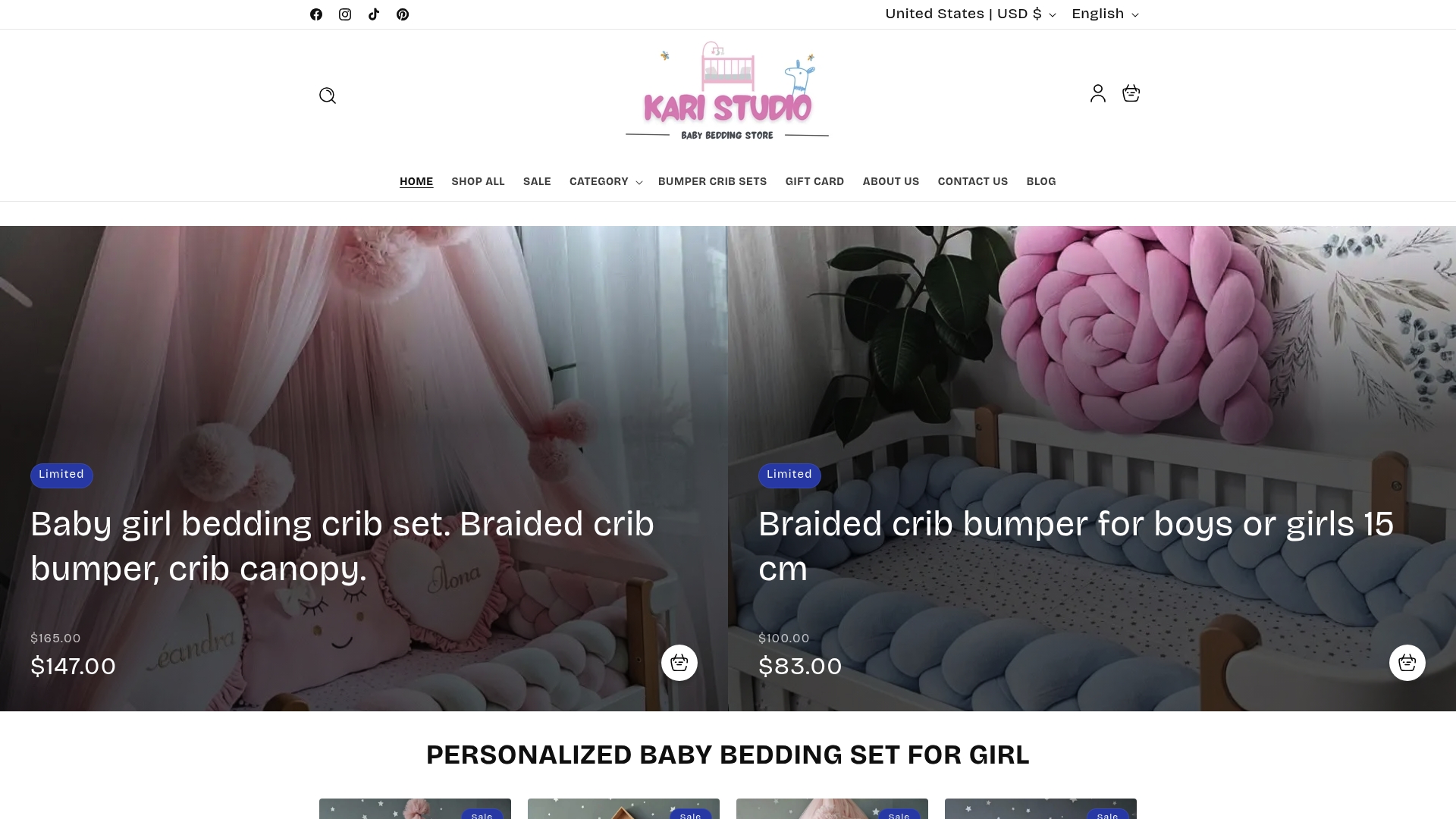
Let us help you make an informed decision. Our nursery collection features carefully designed crib bumpers and curated accessories that blend modern safety awareness with comfort and style. Explore Kari Studio’s trusted range to find products that match your needs and align with up-to-date safety guidelines. Visit our home page and experience shopping made simple and secure. Give your child the safest start—discover quality nursery essentials now before our bestselling items sell out.
Frequently Asked Questions
What are crib bumpers and what is their purpose?
Crib bumpers are padded cushions that line the interior walls of an infant’s crib. They were historically designed to prevent babies from getting limbs stuck between crib slats or bumping their heads against the crib’s hard surfaces.
Are crib bumpers safe for infants?
No, crib bumpers are now considered potentially hazardous. They can increase the risk of suffocation, overheating, and accidental climbing. Pediatric experts recommend against using traditional padded bumpers in favor of bare crib surfaces.
What alternatives can parents use instead of crib bumpers?
Parents can consider breathable mesh crib liners, vertical crib rail covers, sleep sacks, and fitted sheets with secure elastic edges to create a safe sleep environment without using traditional crib bumpers.
What are the recommended safe sleep practices for infants?
Pediatric experts recommend using firm mattresses with tightly fitted sheets, avoiding loose bedding and soft objects, and placing infants on their backs to sleep to minimize risks associated with sudden infant death syndrome (SIDS).

